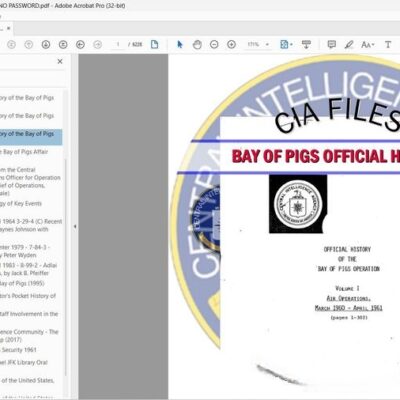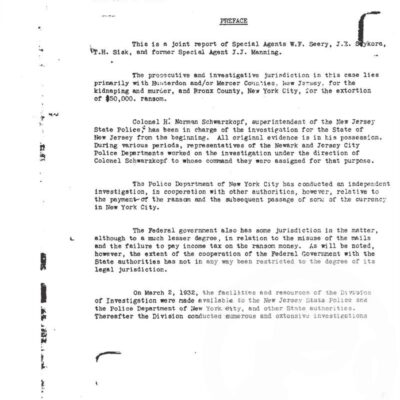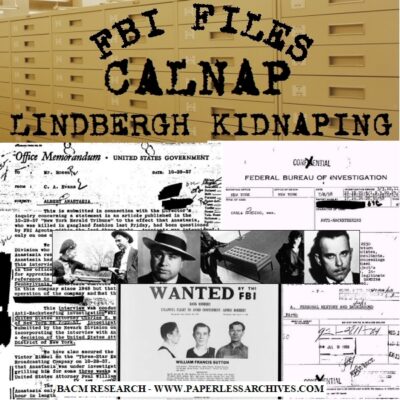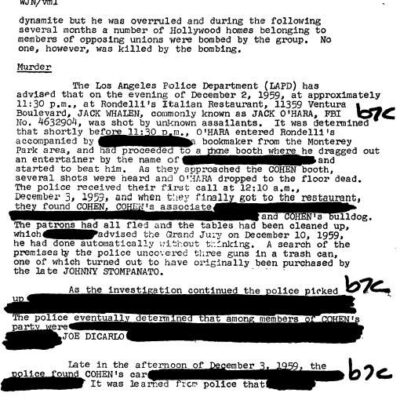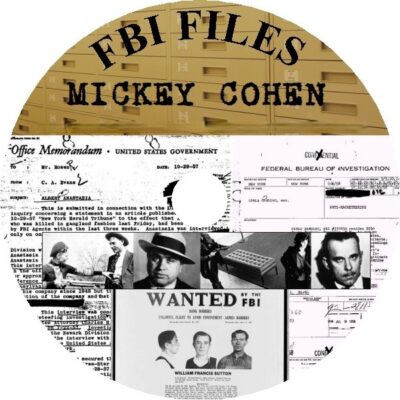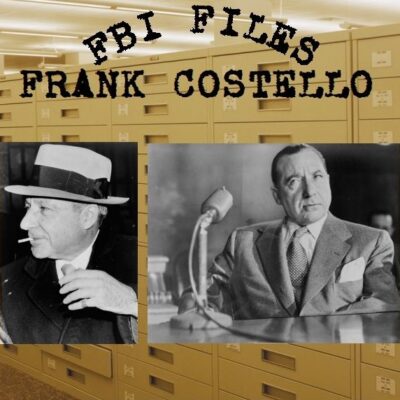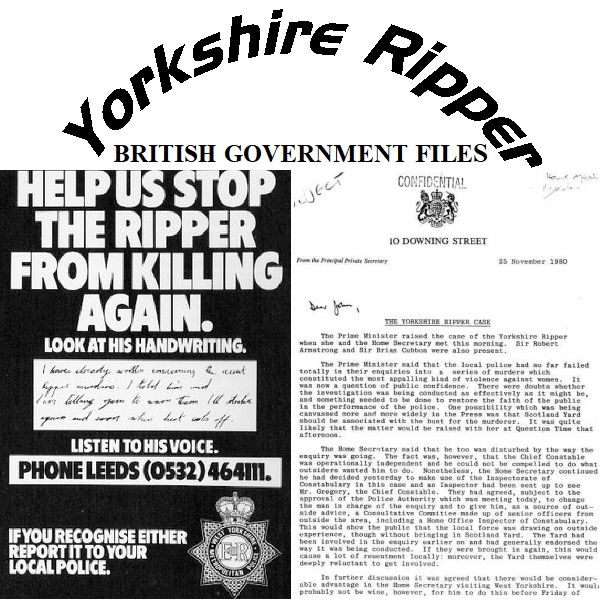
Description
Yorkshire Ripper Case: Timeline and Key Figures
Timeline of Main Events in the Yorkshire Ripper Case (as per the provided sources):
1969:
- Two Incidents Involving Prostitutes: Peter Sutcliffe comes to the notice of the police on two occasions in connection with incidents involving prostitutes in Bradford.
- First Incident: Sutcliffe attacks a prostitute in Bradford with a large stone inside a sock. He tells Trevor Birdsall about it upon returning. No charges are filed.
- Second Incident: Sutcliffe is arrested in a prostitution area in Bradford while in possession of a hammer. He is charged with “going equipped for stealing” as police do not suspect violent intent.
Early 1970s:
- “Curious and Unexplained Lull”: The Byford Report notes a period of reduced or absent criminal activity attributed to Sutcliffe, raising the possibility of other unreported attacks on prostitutes and unaccompanied women.
1974:
- Marriage to Sonia Szurma: Peter Sutcliffe marries Sonia Szurma on April 10th. They initially live at her parents’ house in Clayton.
July 5, 1975:
- Attempted Murder of Anna Rogulskyj: Sutcliffe attacks Anna Rogulskyj with a hammer in an alleyway in Keighley, inflicting severe head injuries and superficial slash wounds. The crime is not linked to any others or the future Ripper series at this time.
August 15, 1975:
- Attack on Olive Smelt: Sutcliffe attacks Olive Smelt with a hammer in Boothtown, Halifax, causing serious head injuries. He also inflicts slash wounds with a knife after disarranging her clothing. This attack is similar to the Rogulskyj case but not specifically linked, nor is it connected to the future Ripper series at this point.
October 30, 1975:
- Murder of Wilma McCann: Sutcliffe murders Wilma McCann, a known prostitute, on the Prince Philip playing fields in Leeds. She is struck on the head with a hammer and then stabbed multiple times in the neck, chest, and abdomen after her clothing is disturbed. This is considered the first murder in the “Ripper” series.
September 26, 1977:
- Move to Heaton: Peter and Sonia Sutcliffe move into a detached house he bought in the Heaton district of Bradford.
June 1978:
- “Special Notice” Issued: West Yorkshire Police issue a “Special Notice” to all police forces about the murders that have occurred, officially recognizing the “Ripper” series. The attempted murders of Rogulskyj and Smelt are linked to this series at this point.
November 25, 1980:
- Birdsall’s Anonymous Letter: Trevor Birdsall sends an anonymous letter to the police stating he has “good reason to now [sic]” the Ripper and names Peter Sutcliffe, providing his address and workplace. The letter is marked “Priority No 1.”
- Existing Police Records on Sutcliffe: An index card is created based on Birdsall’s letter. A policewoman discovers three existing index cards for Sutcliffe in police records.
- Letter Remains Unattended: Despite being marked priority and Sutcliffe having prior records, the papers concerning Birdsall’s tip remain in a filing tray in the incident room.
November 26, 1980:
- Birdsall Visits Police Station: Trevor Birdsall visits Bradford police station to reiterate his concerns about Sutcliffe. He adds information about being with Sutcliffe on August 16, 1975 (the date of the Olive Smelt attack) when Sutcliffe pursued a woman after a bar room dispute in Halifax.
- Report of Birdsall’s Visit Lost: The report compiled based on Birdsall’s visit is subsequently lost despite a “comprehensive search.”
January 2, 1981:
- Sutcliffe’s Arrest: Police in Sheffield observe Sutcliffe in the company of a prostitute in a “red light” area. He is arrested for theft of car number plates after a check reveals the plates on his vehicle do not match the vehicle itself.
- Recovery of Hammer and Knife: Approximately 24 hours after his arrest, the arresting officer, prompted by the possibility of Sutcliffe’s involvement in the Ripper crimes, returns to the arrest scene and finds a hammer and knife Sutcliffe had discarded while allegedly urinating.
- Recovery of Second Knife: An additional knife is found hidden in the cistern of a toilet at Hammerton Road Police Station where Sutcliffe was held after his arrest.
Post-January 2, 1981:
- Focus on Sutcliffe: The discovery of the weapons leads the West Yorkshire inquiry team to strongly suspect Sutcliffe is the Ripper, despite potential inconsistencies on his Millgarth incident room record card regarding accent and handwriting.
- Sutcliffe’s Confession: Following the finding of the weapons, Sutcliffe begins to admit to the crimes and provides a detailed statement to the interviewing officers.
May 22, 1981:
- Sutcliffe’s Conviction: Peter William Sutcliffe is convicted at the Central Criminal Court of 13 cases of murder and 7 cases of attempted murder. He is sentenced to 20 concurrent terms of life imprisonment with a recommendation to serve a minimum of 30 years.
Post-Trial (1981 onwards):
- Diagnosis of Schizophrenia: Despite being found sane at his trial, Sutcliffe is soon diagnosed with schizophrenia.
- Initial Block on Psychiatric Transfer: Attempts to transfer Sutcliffe to a secure psychiatric unit are initially unsuccessful.
- Transfer to Broadmoor Hospital (1984): In 1984, Sutcliffe is finally transferred to Broadmoor Hospital under Section 47 of the Mental Health Act 1983.
June 1, 2006:
- Release of the Byford Report: The UK Home Office releases Sir Lawrence Byford’s 1981 report on the official inquiry into the Ripper case. Parts of the report, specifically “Description of suspects, photofits and other assaults,” remain censored.
1980-1984:
- Cabinet Office Papers: British Prime Minister Cabinet Office papers document concerns about the lack of progress in the Ripper case, including a 10 Downing Street memo noting Margaret Thatcher’s displeasure. These papers also include a summary of the findings of the Bradford Report.
Cast of Characters:
- Peter William Sutcliffe: The “Yorkshire Ripper.” Born in Shipley, West Yorkshire, on June 2, 1946. He worked various unskilled jobs, including as a grave digger and later as a tire fitter and truck driver for T. & W.H. Clark (Holdings) Ltd. He committed a series of murders and attempted murders of women between 1975 and 1980. He was arrested in January 1981, confessed, and was convicted in May 1981. Later diagnosed with schizophrenia and transferred to Broadmoor Hospital.
- Sonia Szurma (later Sutcliffe): Peter Sutcliffe’s wife. They married on April 10, 1974, and initially lived with her parents before moving to their own house in Heaton, Bradford, in 1977.
- Trevor Birdsall: A friend and associate of Peter Sutcliffe since 1966. In November 1980, he sent an anonymous letter to the police naming Sutcliffe as a potential suspect in the Ripper case and later visited the police station to provide further information. His crucial tip-offs were significantly delayed in the police investigation.
- Anna Rogulskyj: A victim of Sutcliffe’s attempted murder on July 5, 1975, in Keighley. She suffered severe head injuries and superficial slash wounds but survived.
- Olive Smelt: A victim of Sutcliffe’s attack on August 15, 1975, in Boothtown, Halifax. She sustained serious head injuries and slash wounds but survived.
- Wilma McCann: The first identified murder victim in the “Ripper” series, killed on October 30, 1975, in Leeds. She was a known prostitute.
- Lawrence Byford (Sir Lawrence Byford): Her Majesty’s Inspector of Constabulary who conducted an official inquiry into the police investigation of the Yorkshire Ripper case. His 1981 report (the Byford Report) highlighted significant errors and failures in the investigation.
- William Whitelaw: The Home Secretary at the time of the later stages of the Ripper investigation and the release of the Byford Report’s summary.
- Margaret Thatcher: The British Prime Minister during a significant period of the Ripper investigation. A 10 Downing Street memo indicates her displeasure with the lack of progress in the case.
Yorkshire Ripper British Police Files
431 pages of British Police and British Government files concerning the Yorkshire Ripper case.
The Yorkshire Ripper case was one of the largest police investigations in the history of England. During 1969 an otherwise unremarkable young man named Peter William Sutcliffe came to the notice of the police on two occasions in connection with incidents involving prostitutes. Sutcliffe, who at that time was 23 years of age, was a native of Shipley, West Yorkshire and lived there with his parents. He was not notably abnormal, although he had gained a reputation for a rather macabre sense of humor whilst employed as a grave digger at Bingley.
It is apparent that at some point during 1969, Sutcliffe’s interest in prostitutes attained a new dimension with a desire on his part to inflict physical injury upon them. Although the police files on two incidents involving Sutcliffe during that year were destroyed some time ago as part of a “weeding” process there is no doubt that on one occasion Sutcliffe attacked a prostitute in Bradford with a cache consisting of a large stone inside a man’s sock.
He had left Birdsall in his car before the incident and told him about what had happened when he returned. Surprisingly he was not charged with any offence. During the same year Sutcliffe was arrested in a prostitution area in Bradford whilst in possession of a hammer. He was not suspected by the police of having the hammer for the purpose of inflicting violence to the person and the meager police records remaining show that he was subsequently charged with “going equipped for stealing”. At the time of these attacks Sutcliffe was courting Sonia Szurma whom he was to marry in 1974.
Sutcliffe was born at Shipley, West Yorkshire, on 2nd June 1946. After leaving school at the age of 15, he had a variety of unskilled and semi-skilled jobs in the Bradford area. During the period in which his admitted crimes were committed he was employed as a tire fitter, and subsequently, following qualification as a heavy goods vehicle driver, as a truck driver for the Bradford engineering and transport company, T. & W.H. Clark (Holdings) Ltd. On the 10th of April 1974 he married Sonia Szurma with whom he then lived, first at her parents’ house in Clayton and later, from the 26th September 1977, in a detached house which he bought in the Heaton district of Bradford. At the time of his marriage Sutcliffe owned a lime green Ford Capri car with the registered number EUA 83IK.
The first of the crimes for which Sutcliffe was convicted was the attempted murder of Anna Rogulskyj in Keighley on the 5th July 1975. Sutcliffe attacked his victim with a hammer in an alleyway in Keighley and left her lying on the ground suffering from very severe head injuries and from a number of superficial slash wounds to the body. The crime was not linked with any others neither was it linked with the Ripper series until June 1978 when the West Yorkshire Police issued a “Special Notice” to all police forces about the murders which had, by then, been committed.
On the 15th August 1975, just over a month after the Rogulskyj incident, Sutcliffe, after leaving his friend Trevor Birdsall in his car, attacked Olive Smelt with a hammer in Boothtown, Halifax, inflicting serious head injuries. Using a knife he also inflicted two slash wounds to her back after first disarranging her clothing. Although the nature of the crime was very similar to the attempted murder of Anna Rogulskyj it was not specifically linked with it in police crime circulations, neither was it linked with the Ripper series until June 1978. In neither of these two crimes was any substantial evidence available about either the assailants or about any vehicle which might have been used.
The first murder in the series occurred on the 30th of October 1975 when Sutcliffe killed Wilma McCann, a known prostitute, on the Prince Philip playing fields in Leeds. Once again, the victim was hit on the head with a hammer, one of the blows penetrating the full thickness of the skull. On this occasion, however, unlike the tentative slashings of the bodies of Rogulskyj and Smelt, McCann was stabbed once in the neck and 14 times in the chest and abdomen. In what was to become a standard Ripper trademark, McCann’s clothing had been disturbed so that before the stab wounds were inflicted the whole of her torso was displayed. The opinion of the pathologist was that the victim had been struck with the hammer whilst in a standing position and that the subsequent injuries were inflicted as she lay disabled and unconscious on the ground. This too was to become part of Sutcliffe’s standard method of operation.
Sutcliffe would eventually be convicted of attacking 17 more women, killing 12, that took place over the next 5 years.
On 2nd January 1981 Sutcliffe was seen by the police whilst in the company of a prostitute in the “red light” area of Sheffield. He was arrested for an offence of theft of car number plates, detected because a check with the Police National Computer indicated that his vehicle did not match the vehicle to which the number plates displayed on it were allocated. Some 24 hours after his arrest the arresting officer, having been advised to consider the possibility that Sutcliffe might have connections with the Ripper crimes, returned to the scene of the arrest and there recovered a hammer and knife which Sutcliffe had disposed of whilst allegedly urinating nearby. An additional knife was later recovered from the cistern of a toilet in Hammerton Road Police Station where Sutcliffe had hidden it following his arrest. From that point onwards, although on the basis of his record card in the Millgarth incident room it might still have been possible for him to have been eliminated on accent and handwriting grounds, the finding of the hammer and the two knives prompted members of the West Yorkshire inquiry team into thinking that Sutcliffe was the man they were looking for. Thereafter he soon began to admit the crimes with which he was subsequently charged and gave a detailed statement to the interviewing officers.
On Friday, 22nd May 1981, Peter William Sutcliffe was convicted at the Central Criminal Court of 13 cases of murder and 7 cases of attempted murder and sentenced to 20 concurrent terms of life imprisonment, with a recommendation that he should serve a minimum of 30 years.
Despite being found sane at his trial, he was soon diagnosed as suffering from schizophrenia. Attempts to send him to a secure psychiatric unit were initially blocked. In 1984 Sutcliffe was finally sent to Broadmoor hospital, under Section 47 of the Mental Health Act 1983.
HOME OFFICE FILES
147 pages of Home Office files from 1980. Contains notes concerning changes made in the Ripper Team, errors made in the investigation, and a review of the “handbag” investigation.
THE YORKSHIRE RIPPER CASE REVIEW OF THE POLICE INVESTIGATION OF THE CASE BY LAWRENCE BYFORD, Esq., CBE., QPM., HER MAJESTY’S INSPECTOR OF CONSTABULARY
A 154-page report commonly known as the Byford Report.
On June 1, 2006 the UK Home Office released Inspector of Constabulary, Sir Lawrence Byford’s 1981 report of an official inquiry into the Ripper case. Part of the document entitled “Description of suspects, photofits and other assaults” remains censored by the Home Office.
Referring to the period between 1969 – when Sutcliffe first came to the attention of police – and 1975, the year of the murder of Wilma McCann, the report states: “There is a curious and unexplained lull in Sutcliffe’s criminal activities and there is the possibility that he carried out other attacks on prostitutes and unaccompanied women during that period.” In 1969 Sutcliffe, described in the Byford report as an “otherwise unremarkable young man”, came to the notice of police on two occasions in connection with incidents involving prostitutes. The report said that it was clear he had on at least one occasion attacked a Bradford prostitute with a cosh. Also, in 1969 he was arrested in the red light district of the city in possession of a hammer. However, rather than believing Sutcliffe might use the hammer as an offensive weapon, the arresting officers assumed he was a burglar and he was charged with “going equipped for stealing.”
Sir Lawrence’s report states: “We feel it is highly improbable that the crimes in respect of which Sutcliffe has been charged and convicted are the only ones attributable to him. This feeling is reinforced by examining the details of a number of assaults on women since 1969 which, in some ways, clearly fall into the established pattern of Sutcliffe’s overall modus-operandi. I hasten to add that I feel sure that the senior police officers in the areas concerned are also mindful of this possibility but, in order to ensure full account is taken of all the information available, I have arranged for an effective liaison to take place.” Police identified a number of attacks which matched Sutcliffe’s modus operandi and tried to question the killer, but he was never charged with other crimes.
The Byford report’s major findings were contained in a summary published by the then home secretary, William Whitelaw, but this is the first-time precise details of the bungled police investigation have been disclosed. Sir Lawrence described delays in following up vital tip-offs from Trevor Birdsall, an associate of Sutcliffe’s since 1966. On November 25, 1980, Birdsall sent an anonymous letter to police, the text of which ran as follows: “I have good reason to now [sic] the man you are looking for in the Ripper case. This man as [sic] dealings with prostitutes and always had a thing about them… His name and address are Peter Sutcliffe, 6 Garden Lane, Heaton, Bradford. Workes [sic] for Clarkes Transport, Shipley.” This letter was marked “Priority No 1”. An index card was created on the basis of the letter and a policewoman found Sutcliffe already had three existing index cards in the records. But “for some inexplicable reason”, said the Byford report, the papers remained in a filing tray in the incident room until the murderer’s arrest on January 2 the following year.
Birdsall visited Bradford police station the day after sending the letter to repeat his misgivings about Sutcliffe; he added the information that he had been with Sutcliffe when Sutcliffe got out of a car to pursue a woman with whom he had had a bar room dispute in Halifax on August 16, 1975. This was the date and place of the Olive Smelt attack. A report compiled on this visit was lost, despite a “comprehensive search” which took place after Sutcliffe’s arrest, according to the report. Sir Lawrence said: “The failure to take advantage of Birdsall’s anonymous letter and his visit to the police station was yet again a stark illustration of the progressive decline in the overall efficiency of the major incident room. It resulted in Sutcliffe being at liberty for more than a month when he might conceivably have been in custody. Thankfully, there is no reason to think he committed any further murderous assaults within that period.
The report covers: Creation of a Major Incident Room. The Cross Area Sighting Inquiry. The Tyre (Tire) Marks and Vehicle Tracking Inquiry. The Letters and Tape Inquiry. The Police Interviews involving Sutcliffe. Media Relations. Lack of Computerization of Records. Management of “series crimes”.
BRITISH PRIME MINISTER CABINET OFFICE PAPERS
25 pages of British Prime Minister Cabinet Office papers dating from 1980 to 1984, concerning the Yorkshire Ripper case. A 10 Downing Street Memo notes Prime Minister Margaret Thatcher’s displeasure of the lack of progress in the case. Includes a summary of the findings in the Bradford Report.
HOME OFFICE REPORTS
In addition to the material above on the disc are two Home Office Reports, The Effective Use of the Media in Serious Crime Investigations and Reviewing Murder Investigations: An Analysis of Progress Reviews From Six Police Forces.
